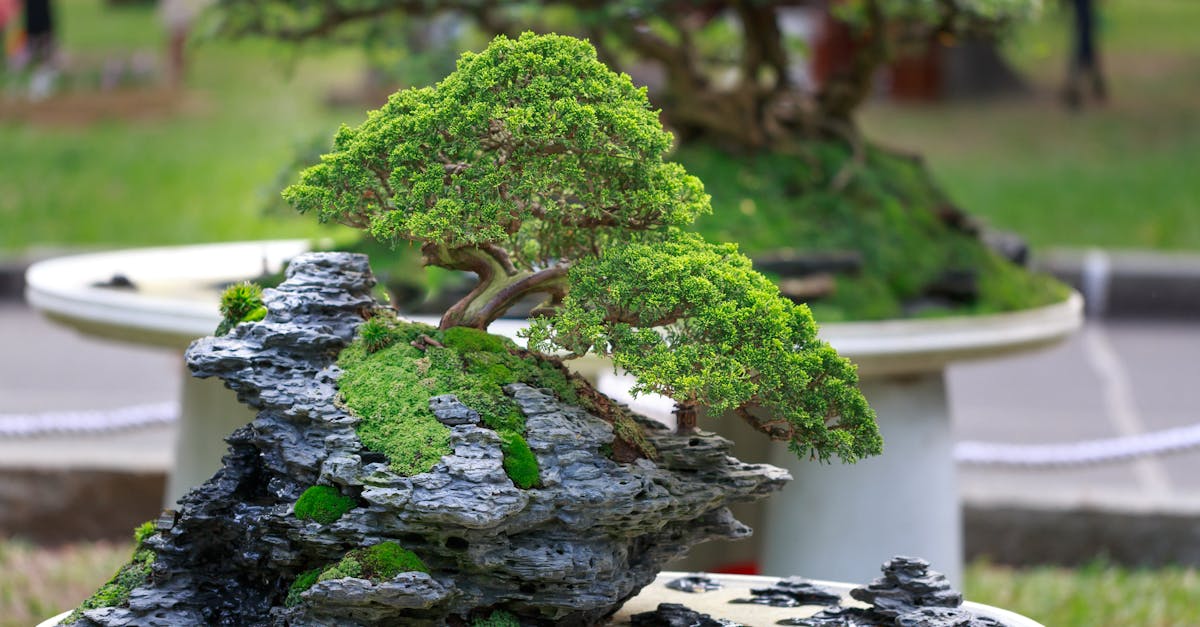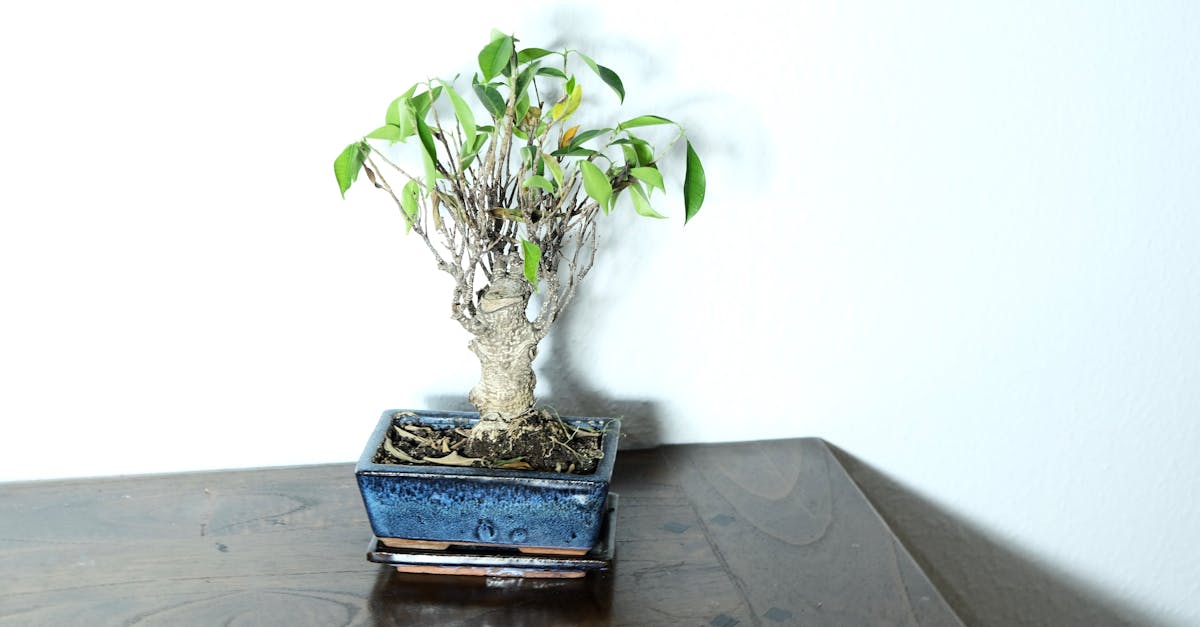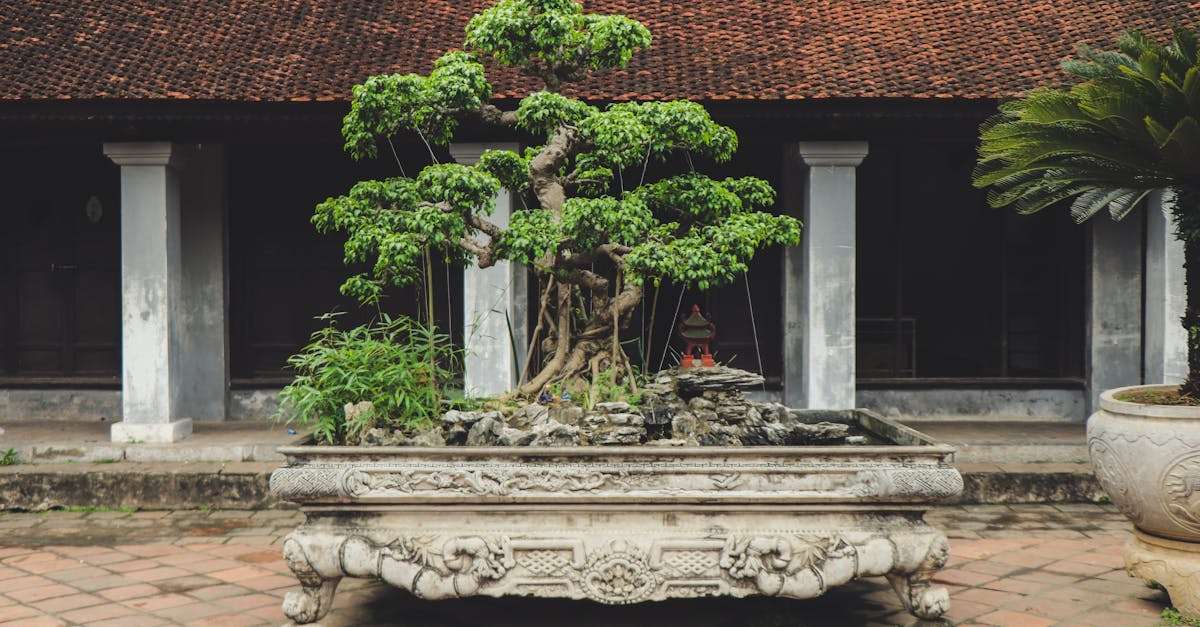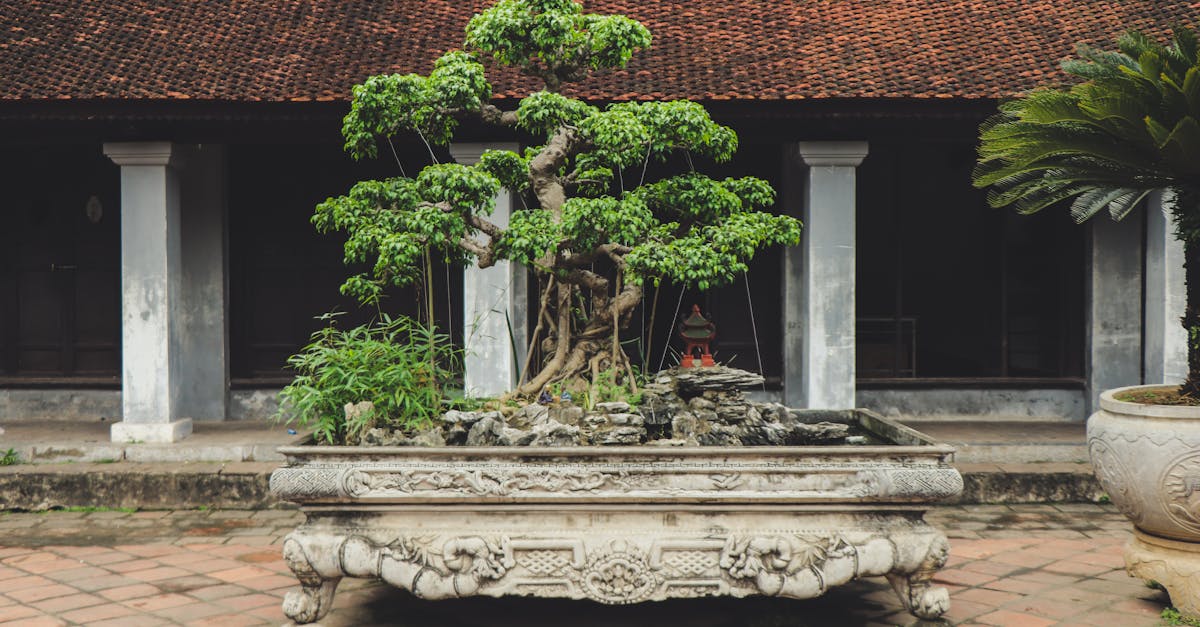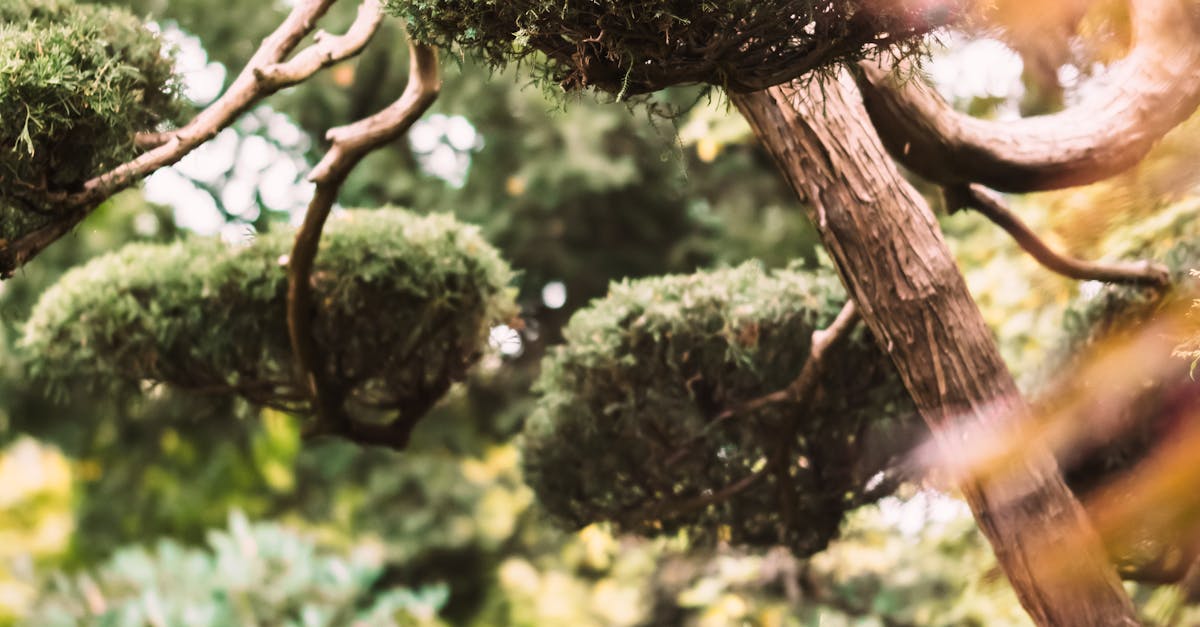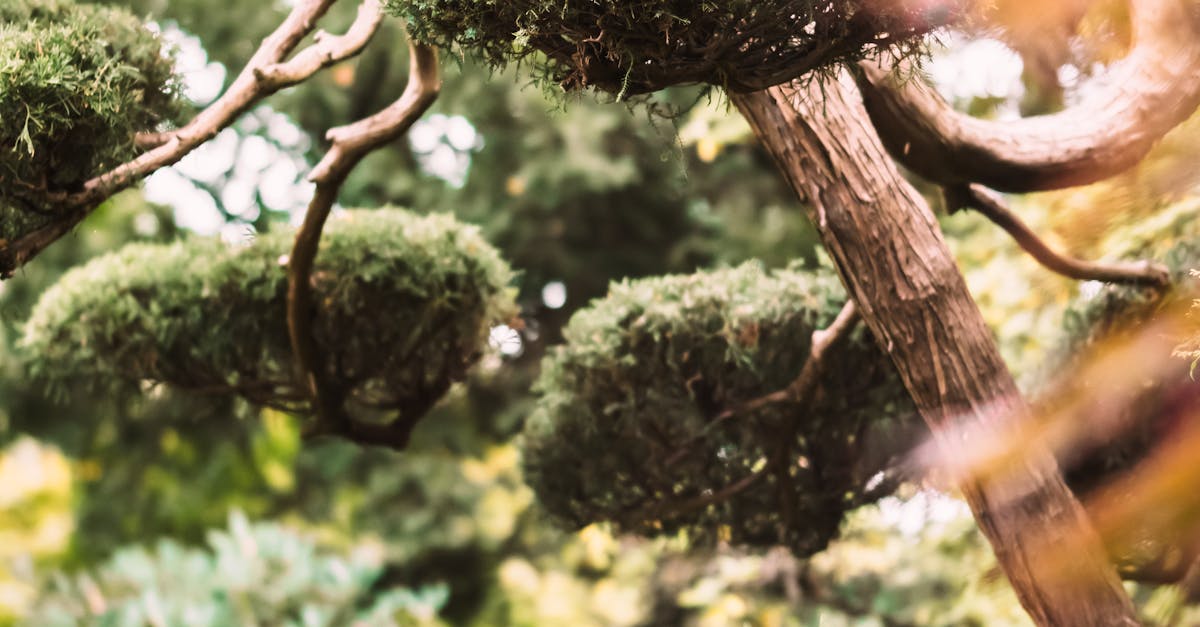Protecting Your Bonsai: A Comprehensive Guide to Indoor Pest Management
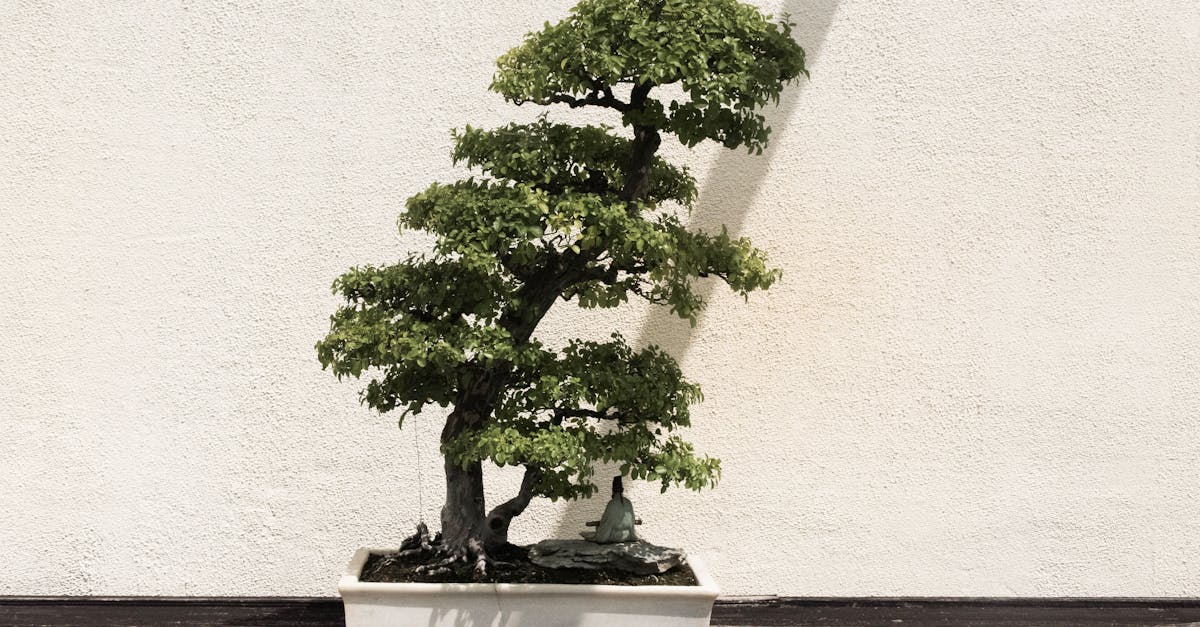
Pests can be a major problem for bonsai, causing damage to the leaves, stems, and roots. If left unchecked, pests can eventually kill a bonsai tree. There are a number of things you can do to protect your bonsai from pests, including identifying common pests, implementing preventive measures, and using natural pest control methods.
One of the most important things you can do to protect your bonsai from pests is to identify common pests. This will help you to take the appropriate steps to control the pests and prevent them from causing damage to your tree. Some of the most common indoor pests that affect bonsai include aphids, mealybugs, and spider mites.
Once you have identified the pests that are affecting your bonsai, you can implement preventive measures to help keep them from coming back. These measures include regular cleaning and inspection of your bonsai, quarantining new plants before adding them to your collection, and optimizing bonsai care to provide your tree with the best possible growing conditions.
1. Identifying Common Indoor Pests
Identifying common indoor pests is the first step to protecting your bonsai from their damage. Here are some of the most common indoor pests and how to identify them:
Aphids are small, soft-bodied insects that come in a variety of colors, including green, black, brown, and red. They feed on the sap of plants, causing leaves to curl and turn yellow. Aphids can also secrete a sticky substance called honeydew, which can attract ants and other pests.
Mealybugs are small, oval-shaped insects that are covered in a white, waxy substance. They feed on the sap of plants, causing leaves to turn yellow and drop off. Mealybugs can also cause stems to become stunted and distorted.
Spider mites are tiny, spider-like pests that are difficult to see with the naked eye. They feed on the leaves of plants, causing them to turn yellow and brown. Spider mites can also cause leaves to drop off and webbing to appear on the plant.
If you think your bonsai may be infested with pests, it is important to take action immediately. The longer you wait to treat the infestation, the more damage the pests will cause to your tree.
Aphids
Aphids are small, soft-bodied insects that come in a variety of colors, including green, black, brown, and red. They have piercing mouthparts that they use to suck sap from plants. Aphids can infest a wide range of plants, including bonsai trees.
Aphids have a complex life cycle that involves both sexual and asexual reproduction. In the spring, female aphids give birth to live nymphs without mating. These nymphs mature into wingless females that can reproduce asexually, giving birth to more nymphs. In the fall, male and female aphids are produced that mate and lay eggs. The eggs overwinter and hatch in the spring, starting the cycle anew.
Aphids can cause a variety of damage to bonsai trees, including:
- Curling and yellowing of leaves
- Stunted growth
- Dieback of branches
- Sooty mold growth
Aphids can also transmit diseases to bonsai trees.
There are a number of ways to control aphids on bonsai trees, including:
- Biological control: Ladybugs, lacewings, and parasitic wasps are all natural predators of aphids. You can attract these beneficial insects to your garden by providing them with food and shelter.
- Chemical control: There are a number of chemical pesticides that can be used to control aphids on bonsai trees. However, it is important to use these pesticides only as a last resort, as they can be harmful to beneficial insects and the environment.
- Cultural control: There are a number of cultural practices that can help to reduce the risk of aphid infestations on bonsai trees. These practices include:
- Keep your bonsai trees healthy: Healthy trees are less likely to be infested by aphids.
- Avoid overfertilizing your bonsai trees: Overfertilized trees are more attractive to aphids.
- Prune your bonsai trees regularly: Pruning helps to remove aphid-infested leaves and stems.
- Inspect your bonsai trees regularly: Inspect your bonsai trees regularly for signs of aphids. If you find any aphids, take steps to control them immediately.
Mealybugs
Mealybugs are small, oval-shaped insects that are covered in a white, waxy substance. They feed on the sap of plants, causing leaves to turn yellow and drop off. Mealybugs can also cause stems to become stunted and distorted.
There are a number of different types of mealybugs that can infest bonsai trees, including:
- Citrus mealybug: This is the most common type of mealybug that affects bonsai trees. It is found in all parts of the world and can infest a wide range of plants.
- Longtailed mealybug: This type of mealybug is found in tropical and subtropical regions. It is characterized by its long, tail-like filaments.
- Pink hibiscus mealybug: This type of mealybug is found in warm climates. It is characterized by its pink color and its preference for hibiscus plants.
Mealybugs can cause a variety of damage to bonsai trees, including:
- Stunted growth: Mealybugs can cause bonsai trees to become stunted and distorted.
- Yellowing and dropping of leaves: Mealybugs can cause leaves to turn yellow and drop off.
- Sooty mold growth: Mealybugs can secrete a sticky substance called honeydew, which can attract ants and other pests. Honeydew can also provide a substrate for sooty mold to grow.
Mealybugs can be difficult to control, as they are protected by their waxy coating. However, there are a number of methods that can be used to control mealybugs on bonsai trees, including:
- Biological control: Ladybugs, lacewings, and parasitic wasps are all natural predators of mealybugs. You can attract these beneficial insects to your garden by providing them with food and shelter.
- Chemical control: There are a number of chemical pesticides that can be used to control mealybugs on bonsai trees. However, it is important to use these pesticides only as a last resort, as they can be harmful to beneficial insects and the environment.
- Cultural control: There are a number of cultural practices that can help to reduce the risk of mealybug infestations on bonsai trees. These practices include:
- Keep your bonsai trees healthy: Healthy trees are less likely to be infested by mealybugs.
- Avoid overfertilizing your bonsai trees: Overfertilized trees are more attractive to mealybugs.
- Prune your bonsai trees regularly: Pruning helps to remove mealybug-infested leaves and stems.
- Inspect your bonsai trees regularly: Inspect your bonsai trees regularly for signs of mealybugs. If you find any mealybugs, take steps to control them immediately.
Spider Mites
Spider mites are tiny, spider-like pests that are difficult to see with the naked eye. They feed on the leaves of plants, causing them to turn yellow and brown. Spider mites can also cause leaves to drop off and webbing to appear on the plant.
Spider mites prefer warm, dry conditions. They are most likely to infest bonsai trees that are grown in greenhouses or indoors. Spider mites can also infest bonsai trees that are grown outdoors during hot, dry weather.
There are a number of signs that can indicate that your bonsai tree is infested with spider mites, including:
- Yellowing and browning of leaves: Spider mites feed on the chlorophyll in leaves, causing them to turn yellow and brown.
- Dropping of leaves: Spider mites can cause leaves to drop off prematurely.
- Webbing: Spider mites produce webbing to protect themselves and their eggs. Webbing can be found on the leaves, stems, and branches of infested plants.
Spider mites can be difficult to control, as they are resistant to many pesticides. However, there are a number of methods that can be used to control spider mites on bonsai trees, including:
- Biological control: Predatory mites are natural enemies of spider mites. You can purchase predatory mites from commercial suppliers and release them in your garden or greenhouse.
- Chemical control: There are a number of chemical pesticides that can be used to control spider mites on bonsai trees. However, it is important to use these pesticides only as a last resort, as they can be harmful to beneficial insects and the environment.
- Cultural control: There are a number of cultural practices that can help to reduce the risk of spider mite infestations on bonsai trees. These practices include:
- Keep your bonsai trees healthy: Healthy trees are less likely to be infested by spider mites.
- Avoid overfertilizing your bonsai trees: Overfertilized trees are more attractive to spider mites.
- Water your bonsai trees regularly: Spider mites prefer dry conditions. Watering your bonsai trees regularly will help to keep them healthy and less susceptible to spider mite infestations.
- Inspect your bonsai trees regularly: Inspect your bonsai trees regularly for signs of spider mites. If you find any spider mites, take steps to control them immediately.
2. Implementing Preventive Measures
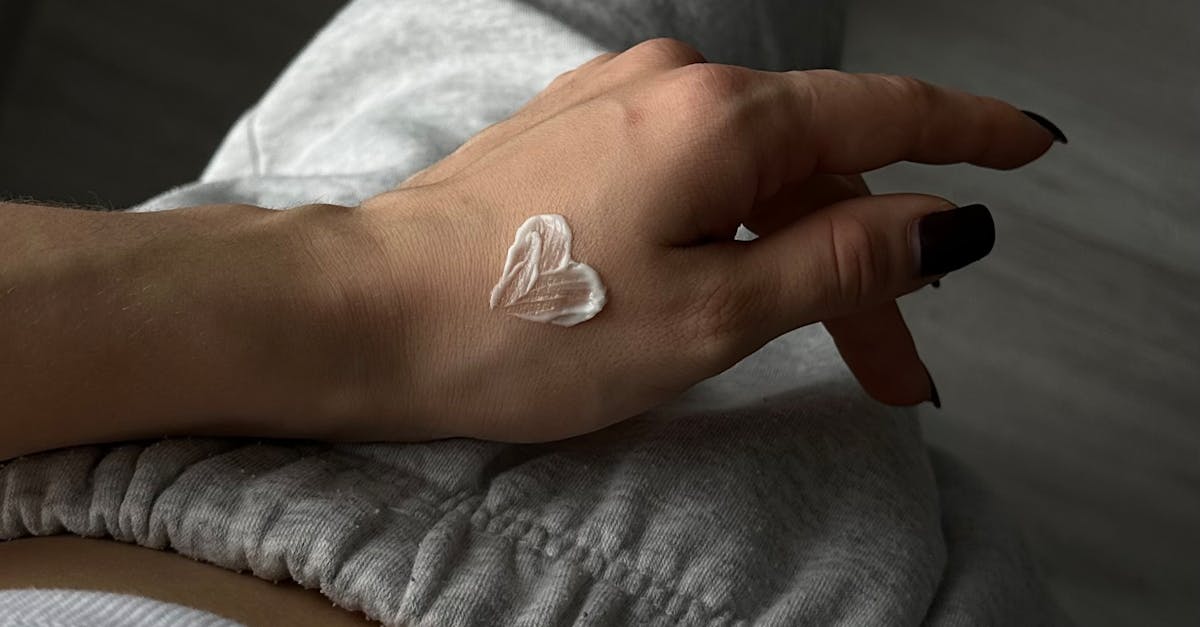
One of the best ways to protect your bonsai from pests is to implement preventive measures. These measures will help to create a healthy environment for your tree and make it less attractive to pests.
Regular Cleaning and Inspection: One of the most important preventive measures you can take is to regularly clean and inspect your bonsai tree. This will help to remove any potential breeding grounds for pests and identify any infestations early on. When cleaning your bonsai tree, be sure to remove any dead leaves or debris from the soil and around the base of the tree. You should also inspect the leaves, stems, and branches of your tree for any signs of pests or disease.
Quarantining New Plants: Another important preventive measure is to quarantine any new plants before adding them to your collection. This will help to prevent the introduction of pests or diseases into your bonsai collection. When quarantining a new plant, keep it isolated from your other bonsai trees for at least 30 days. During this time, observe the plant closely for any signs of pests or disease. If you notice any problems, treat the plant accordingly before adding it to your collection.
Optimizing Bonsai Care: Providing your bonsai tree with optimal care will help to keep it healthy and less susceptible to pests. This includes providing your tree with the right amount of sunlight, water, and fertilizer. You should also make sure to prune your bonsai tree regularly to remove any dead or diseased branches. By providing your bonsai tree with the proper care, you can help to create a healthy environment that is less attractive to pests.
Regular Cleaning and Inspection
Regular cleaning and inspection of your bonsai is essential for preventing pest infestations. By removing potential breeding grounds for pests and identifying infestations early on, you can help to keep your bonsai healthy and pest-free.
When cleaning your bonsai, be sure to remove any dead leaves or debris from the soil and around the base of the tree. You should also inspect the leaves, stems, and branches of your tree for any signs of pests or disease. If you notice any problems, such as discolored leaves, webbing, or insects, take steps to identify and treat the problem immediately.
Here is a step-by-step guide to cleaning and inspecting your bonsai:
- Remove dead leaves and debris: Use a soft brush or your fingers to remove any dead leaves or debris from the soil and around the base of the tree. Be careful not to damage the roots of the tree.
- Inspect the leaves: Inspect the leaves of your bonsai for any signs of pests or disease. Look for discolored leaves, webbing, or insects.
- Inspect the stems and branches: Inspect the stems and branches of your bonsai for any signs of pests or disease. Look for any bumps, cracks, or oozing sap.
- Take action: If you find any pests or signs of disease, take steps to identify and treat the problem immediately. You can find more information on how to identify and treat pests and diseases in the following sections of this article.
By following these simple steps, you can help to keep your bonsai healthy and pest-free.
Quarantining New Plants
Quarantining new plants is an important step in preventing the introduction of pests and diseases into your bonsai collection. By keeping new plants isolated from your other bonsai trees for a period of time, you can observe them for any signs of problems and take steps to treat them before they spread to your other trees.
When quarantining a new plant, keep it in a separate location from your other bonsai trees. This could be in a different room, in a greenhouse, or even outdoors. During the quarantine period, observe the plant closely for any signs of pests or disease. If you notice any problems, such as discolored leaves, webbing, or insects, take steps to identify and treat the problem immediately.
The length of the quarantine period will vary depending on the type of plant and the time of year. However, it is generally recommended to quarantine new plants for at least 30 days. This will give you enough time to observe the plant for any signs of problems and take steps to treat them before they spread to your other trees.
Here are some tips for quarantining new plants:
- Place the new plant in a separate location from your other bonsai trees.
- Observe the plant closely for any signs of pests or disease.
- Water and fertilize the plant as usual.
- If you notice any problems, such as discolored leaves, webbing, or insects, take steps to identify and treat the problem immediately.
- Keep the plant in quarantine for at least 30 days.
By following these tips, you can help to prevent the introduction of pests and diseases into your bonsai collection.
Optimizing Bonsai Care
Providing your bonsai with optimal care is essential for keeping it healthy and pest-free. When your bonsai is healthy, it is better able to resist pests and diseases. Here are some tips for optimizing bonsai care:
Watering: Water your bonsai when the soil feels dry to the touch. Avoid overwatering, as this can lead to root rot. The frequency of watering will vary depending on the type of bonsai, the size of the pot, and the climate.
Fertilization: Fertilize your bonsai every two weeks during the growing season. Use a balanced fertilizer that is specifically formulated for bonsai trees.
Sunlight: Bonsai trees need plenty of sunlight to grow and thrive. Place your bonsai in a location where it will receive at least six hours of sunlight per day.
Pruning: Prune your bonsai regularly to remove dead or diseased branches and to shape the tree. Pruning also helps to promote new growth, which can make your bonsai more resistant to pests and diseases.
Repotting: Repot your bonsai every two to three years. Repotting helps to refresh the soil and to prevent the roots from becoming pot-bound.
By following these tips, you can help to keep your bonsai healthy and pest-free. A healthy bonsai is a beautiful bonsai, and it is also a bonsai that is more resistant to pests and diseases.
3. Natural Pest Control Methods
Natural pest control methods are a great way to protect your bonsai from pests without using harmful chemicals. These methods are environmentally friendly and can be just as effective as chemical pesticides.
One of the most effective natural pest control methods is to use beneficial insects. Beneficial insects are insects that prey on pests. Some common beneficial insects include ladybugs, lacewings, and parasitic wasps. You can attract beneficial insects to your bonsai by providing them with food and shelter. For example, you can plant flowers that attract beneficial insects, or you can build a bug hotel.
Another natural pest control method is to use insecticidal soap. Insecticidal soap is a natural pesticide that kills pests by breaking down their exoskeletons. Insecticidal soap is safe to use on bonsai trees, and it is effective against a wide range of pests.
You can also use neem oil to control pests on your bonsai. Neem oil is a natural pesticide that is made from the neem tree. Neem oil is effective against a wide range of pests, including aphids, mealybugs, and spider mites.
If you are dealing with a severe pest infestation, you may need to use a chemical pesticide. However, it is important to use chemical pesticides only as a last resort, as they can be harmful to beneficial insects and the environment.
Here are some tips for using natural pest control methods on your bonsai:
- Identify the pest: The first step to controlling pests is to identify the type of pest that you are dealing with. Once you know what type of pest you are dealing with, you can choose the most effective natural pest control method.
- Use beneficial insects: Beneficial insects are a great way to control pests on your bonsai. Attract beneficial insects to your bonsai by providing them with food and shelter.
- Use insecticidal soap: Insecticidal soap is a safe and effective natural pesticide that can be used to control a wide range of pests.
- Use neem oil: Neem oil is a natural pesticide that is effective against a wide range of pests, including aphids, mealybugs, and spider mites.
- Use chemical pesticides only as a last resort: Chemical pesticides can be harmful to beneficial insects and the environment. Use chemical pesticides only when necessary.
Neem Oil Applications
Neem oil is a natural pesticide that is made from the neem tree. It is effective against a wide range of pests, including aphids, mealybugs, and spider mites. Neem oil is also safe to use on bonsai trees, and it is relatively affordable.
Neem oil works by disrupting the growth and reproduction of pests. It can also repel pests and make them less likely to feed on your bonsai tree. Neem oil is most effective when it is applied to the leaves of your bonsai tree. However, you can also apply neem oil to the soil around your bonsai tree to help prevent pests from entering the soil.
To apply neem oil to your bonsai tree, mix 1 tablespoon of neem oil with 1 gallon of water. Shake the mixture well and then spray it on the leaves of your bonsai tree. Be sure to spray the undersides of the leaves, as this is where pests are most likely to hide. You can also apply neem oil to the soil around your bonsai tree by mixing 1 tablespoon of neem oil with 1 gallon of water and then pouring the mixture around the base of the tree.
Neem oil is safe to use on bonsai trees, but it is important to avoid using it too often. Neem oil can be harmful to beneficial insects, so it is best to use it only when necessary. You should also avoid using neem oil on bonsai trees that are stressed or diseased.
If you are using neem oil to control pests on your bonsai tree, be patient. Neem oil takes time to work, so it may be several weeks before you see results. However, neem oil is a safe and effective way to control pests on bonsai trees, and it is a good alternative to chemical pesticides.
Companion Planting
Companion planting is a gardening technique that involves planting different species of plants together to create a mutually beneficial relationship. Companion planting can be used to improve the growth of plants, deter pests, and attract beneficial insects.
When choosing companion plants for your bonsai, it is important to consider the specific needs of your bonsai tree. Some good companion plants for bonsai trees include:
- Marigolds: Marigolds are known for their ability to repel pests, including aphids, whiteflies, and nematodes.
- Basil: Basil is a good companion plant for bonsai trees because it repels mosquitoes and flies. Basil also attracts beneficial insects, such as ladybugs and lacewings.
- Garlic: Garlic is a natural pest repellent, and it can also help to improve the growth of bonsai trees.
- Chives: Chives are a good companion plant for bonsai trees because they repel aphids and other pests. Chives also attract beneficial insects, such as ladybugs and parasitic wasps.
When planting companion plants around your bonsai tree, be sure to space them far enough apart so that they do not compete for water and nutrients. You should also avoid planting companion plants too close to the trunk of your bonsai tree, as this can restrict airflow and lead to disease.
Companion planting is a safe and effective way to deter and repel pests from your bonsai tree. By choosing the right companion plants, you can create a healthy and pest-free environment for your bonsai tree.
Biological Control
Biological control is a method of pest control that uses beneficial insects and predators to control pest populations. Beneficial insects and predators are naturally occurring organisms that feed on pests. By introducing beneficial insects and predators into your bonsai collection, you can help to establish a natural balance and reduce the need for chemical pesticides.
Some common beneficial insects and predators that can be used for biological control on bonsai trees include:
- Ladybugs: Ladybugs are voracious predators of aphids, mealybugs, and other soft-bodied insects.
- Lacewings: Lacewings are beneficial insects that feed on aphids, mealybugs, and other small pests.
- Parasitic wasps: Parasitic wasps lay their eggs inside the bodies of pests, where the wasp larvae hatch and feed on the pest.
- Praying mantises: Praying mantises are large, predatory insects that feed on a variety of pests, including aphids, mealybugs, and caterpillars.
To attract beneficial insects and predators to your bonsai collection, you can plant flowers that attract these insects. You can also provide nesting sites for beneficial insects, such as ladybugs and lacewings.
Biological control is a safe and effective way to control pests on bonsai trees. By introducing beneficial insects and predators into your bonsai collection, you can help to establish a natural balance and reduce the need for chemical pesticides.
4. Chemical Pest Control Options
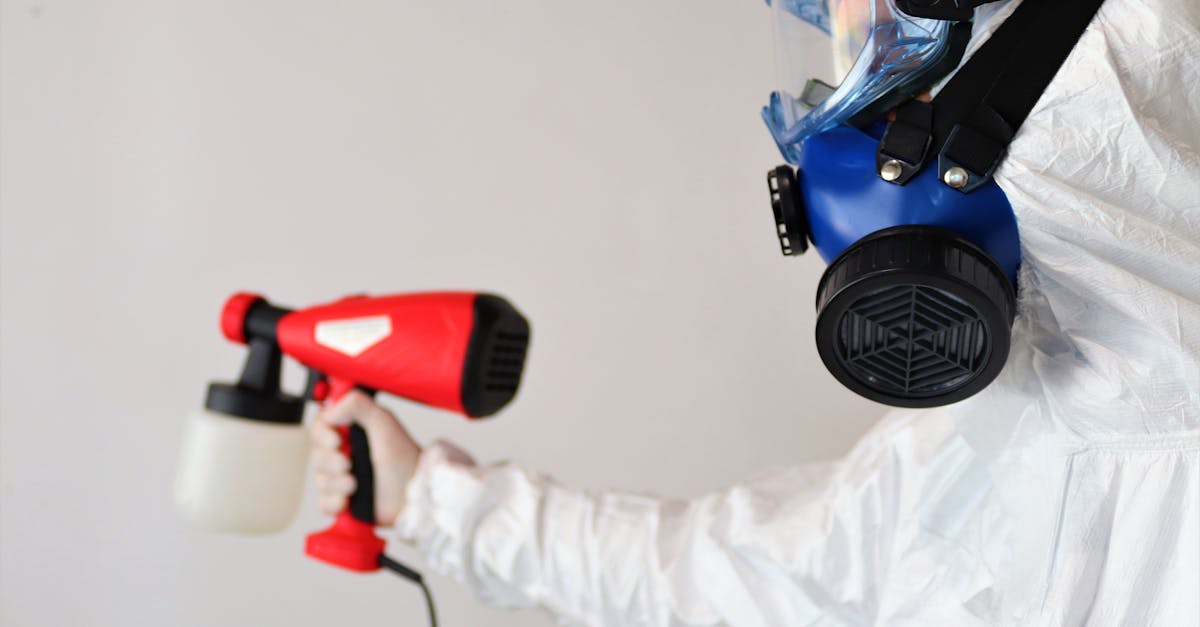
Chemical pesticides can be used to control pests on bonsai trees, but they should only be used as a last resort. Chemical pesticides can be harmful to bonsai trees and the environment, so it is important to use them responsibly.
When choosing a chemical pesticide to use on your bonsai tree, it is important to read the label carefully and follow the instructions for use. Be sure to choose a pesticide that is specifically labeled for use on bonsai trees. You should also consider the potential impact of the pesticide on the environment and on beneficial insects.
Chemical pesticides can be applied to bonsai trees in a variety of ways, including spraying, dusting, and soil drenching. The method of application will depend on the type of pesticide and the target pest.
It is important to wear protective clothing when applying chemical pesticides to bonsai trees. You should also avoid spraying pesticides on windy days, as this can drift the pesticide onto other plants or people.
After applying a chemical pesticide to your bonsai tree, be sure to wash your hands thoroughly and rinse the sprayer or other equipment that you used. You should also keep children and pets away from the treated area until the pesticide has dried.
If you are concerned about the potential impact of chemical pesticides on your bonsai tree or the environment, you can try using natural pest control methods instead. Natural pest control methods are often safer and more environmentally friendly than chemical pesticides.
Types of Chemical Pesticides
Chemical pesticides can be classified into a number of different groups based on their chemical structure and mode of action. Some of the most common classes of chemical pesticides include:
- Insecticides: Insecticides are used to control insects. They can be classified into two main groups: contact insecticides and systemic insecticides. Contact insecticides kill insects on contact, while systemic insecticides are absorbed by the plant and then kill insects that feed on the plant.
- Fungicides: Fungicides are used to control fungi. They can be classified into two main groups: protective fungicides and curative fungicides. Protective fungicides prevent fungi from infecting plants, while curative fungicides are used to treat plants that have already been infected.
- Herbicides: Herbicides are used to control weeds. They can be classified into two main groups: selective herbicides and non-selective herbicides. Selective herbicides kill specific types of weeds, while non-selective herbicides kill all types of weeds.
It is important to choose the right type of chemical pesticide for the job. You should also read the label carefully and follow the instructions for use. Be sure to choose a pesticide that is specifically labeled for use on bonsai trees. You should also consider the potential impact of the pesticide on the environment and on beneficial insects.
When using chemical pesticides, it is important to wear protective clothing and to follow all safety precautions. You should also avoid spraying pesticides on windy days, as this can drift the pesticide onto other plants or people. After applying a chemical pesticide, be sure to wash your hands thoroughly and rinse the sprayer or other equipment that you used.
Application Techniques and Safety Precautions
Chemical pesticides can be dangerous if they are not used properly. It is important to follow all safety precautions when using chemical pesticides, including:
- Wear protective clothing: When using chemical pesticides, it is important to wear protective clothing, including gloves, long pants, a long-sleeved shirt, and a hat. You should also wear a respirator if you are spraying pesticides in a confined area.
- Follow the instructions for use: Always read the label carefully and follow the instructions for use. Be sure to choose a pesticide that is specifically labeled for use on bonsai trees. You should also consider the potential impact of the pesticide on the environment and on beneficial insects.
- Apply pesticides on a calm day: Avoid spraying pesticides on windy days, as this can drift the pesticide onto other plants or people.
- Do not spray pesticides near water: Avoid spraying pesticides near water, as this can contaminate the water.
- Wash your hands after using pesticides: After using pesticides, be sure to wash your hands thoroughly and rinse the sprayer or other equipment that you used.
If you are concerned about the potential risks associated with chemical pesticides, you can try using natural pest control methods instead. Natural pest control methods are often safer and more environmentally friendly than chemical pesticides.
Integrated Pest Management
Integrated pest management (IPM) is a comprehensive approach to pest control that combines multiple methods to prevent, detect, and control pests. IPM is based on the idea that it is better to prevent pests from becoming a problem in the first place than to try to control them after they have already infested a plant.
IPM programs typically involve a combination of the following methods:
- Cultural practices: Cultural practices are practices that can be used to make a plant less susceptible to pests. These practices include:
- Crop rotation: Crop rotation is the practice of planting different crops in the same location each year. This helps to prevent pests from building up in the soil.
- Sanitation: Sanitation involves removing plant debris and other potential breeding grounds for pests from the garden.
- Water management: Water management involves watering plants at the right time and in the right amount. This helps to prevent plants from becoming stressed and more susceptible to pests.
- Biological control: Biological control is the use of beneficial insects and predators to control pests. Beneficial insects and predators can be released into the garden or they can be attracted to the garden by planting flowers that they find attractive.
- Chemical control: Chemical control is the use of pesticides to control pests. Pesticides should only be used as a last resort, after other methods have failed to control the pests.
IPM is a safe and effective way to control pests on bonsai trees. By combining multiple methods, IPM programs can help to reduce the reliance on chemical pesticides and create a more sustainable pest control program.
5. Monitoring and Ongoing Care
Monitoring and ongoing care are essential for keeping your bonsai healthy and pest-free. By regularly inspecting your bonsai tree and taking steps to prevent and control pests, you can help to keep your tree healthy and beautiful for years to come.
Here are some tips for monitoring and ongoing care of your bonsai tree:
- Regularly inspect your bonsai tree: Regularly inspect your bonsai tree for signs of pests or disease. Look for discolored leaves, webbing, insects, or other signs of problems. If you find any problems, take steps to identify and treat the problem immediately.
- Quarantine new plants: When you bring a new plant into your collection, quarantine it for at least 30 days before adding it to your collection. This will help to prevent the introduction of pests or diseases into your collection.
- Provide your bonsai with optimal care: Providing your bonsai with optimal care will help to keep it healthy and less susceptible to pests. This includes providing your tree with the right amount of sunlight, water, and fertilizer. You should also make sure to prune your bonsai tree regularly to remove dead or diseased branches.
- Be prepared to treat pests: Even with the best care, your bonsai tree may still be infested with pests. If you find pests on your bonsai tree, take steps to identify and treat the problem immediately. You can find more information on how to identify and treat pests in the following sections of this article.
By following these tips, you can help to keep your bonsai healthy and pest-free.
Regular Monitoring and Inspection
Regular monitoring and inspection of your bonsai is essential for early detection and intervention of pest activity or stress. By regularly inspecting your bonsai tree, you can identify problems early on and take steps to correct them before they become serious.
Here are some tips for regularly monitoring and inspecting your bonsai tree:
- Inspect your bonsai tree regularly: Regularly inspect your bonsai tree for signs of pests or disease. Look for discolored leaves, webbing, insects, or other signs of problems. If you find any problems, take steps to identify and treat the problem immediately.
- Pay attention to your bonsai tree’s growth and development: Pay attention to your bonsai tree’s growth and development. If your bonsai tree is not growing or developing as it should, it may be a sign of a problem.
- Look for signs of stress: Look for signs of stress on your bonsai tree. Signs of stress can include yellowing leaves, wilting, or dropping leaves. If you see any signs of stress, try to identify the cause and take steps to correct it.
By regularly monitoring and inspecting your bonsai tree, you can help to keep it healthy and pest-free.
Evaluating Treatment Effectiveness
Evaluating the effectiveness of your pest control measures is essential to ensure ongoing protection of your bonsai tree. By assessing the effectiveness of your pest control measures, you can make adjustments as needed to ensure that your bonsai tree is protected from pests.
Here are some tips for evaluating the effectiveness of your pest control measures:
- Monitor your bonsai tree for signs of pests: After you have applied pest control measures, continue to monitor your bonsai tree for signs of pests. If you see any signs of pests, it may be a sign that your pest control measures are not effective and need to be adjusted.
- Inspect your bonsai tree regularly: Regularly inspect your bonsai tree for signs of pests or disease. If you find any problems, take steps to identify and treat the problem immediately.
- Keep a record of your pest control measures: Keep a record of the pest control measures that you have used, including the date, the type of pest control measure, and the target pest. This will help you to track the effectiveness of your pest control measures and make adjustments as needed.
By evaluating the effectiveness of your pest control measures, you can help to ensure that your bonsai tree is protected from pests.
Maintaining Bonsai Health
Providing your bonsai with the necessary care and support is essential for enhancing its resilience and overall well-being, which can reduce its susceptibility to pests. By providing your bonsai with the proper care, you can help to create a healthy environment that is less attractive to pests.
Here are some tips for maintaining bonsai health:
- Provide your bonsai with the right amount of sunlight: Bonsai trees need plenty of sunlight to grow and thrive. Place your bonsai in a location where it will receive at least six hours of sunlight per day.
- Water your bonsai when the soil feels dry to the touch: Avoid overwatering, as this can lead to root rot. The frequency of watering will vary depending on the type of bonsai, the size of the pot, and the climate.
- Fertilize your bonsai every two weeks during the growing season: Use a balanced fertilizer that is specifically formulated for bonsai trees.
- Prune your bonsai regularly to remove dead or diseased branches: Pruning also helps to promote new growth, which can make your bonsai more resistant to pests.
- Repot your bonsai every two to three years: Repotting helps to refresh the soil and to prevent the roots from becoming pot-bound.
By following these tips, you can help to keep your bonsai healthy and resistant to pests.
Quiz
1. Which of the following is NOT a sign of aphid infestation on bonsai trees?
(a) Curling and yellowing of leaves (b) Stunted growth (c) Sooty mold growth (d) Wilting
2. True or False: Mealybugs can be controlled using insecticidal soap.
(a) True (b) False
3. Which beneficial insect can be used to control spider mites on bonsai trees?
(a) Ladybug (b) Lacewing (c) Parasitic wasp (d) Praying mantis
4. True or False: Chemical pesticides should be used as a last resort for pest control on bonsai trees.
(a) True (b) False
5. Which of the following is a key step in integrated pest management (IPM)?
(a) Regular monitoring and inspection (b) Use of chemical pesticides (c) Biological control (d) All of the above
Answer Key
- (d)
- (a)
- (b)
- (a)
- (d)

